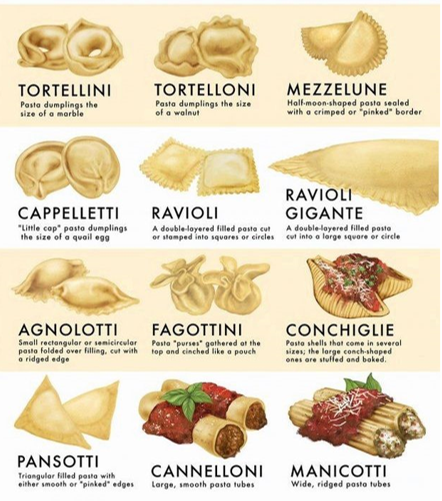The Ultimate Guide to Homemade Pasta (Step-by-Step)
There’s something magical about pasta. For many, it’s more than food—it’s comfort, tradition, and a way to connect with family and friends. While supermarket shelves are lined with dried pasta, making fresh pasta at home elevates the experience to another level.
Homemade pasta has a silky texture, a richer flavor, and an unmistakable freshness that transforms even the simplest sauce into a gourmet meal. But here’s the good news: you don’t need to be Italian or a professional chef to make it. With a few simple ingredients, patience, and the right techniques, anyone can master homemade pasta.
In this step-by-step ultimate guide, you’ll learn everything from choosing ingredients to rolling, cutting, and cooking pasta. We’ll also sprinkle in personal stories, case studies, and pro tips to make your pasta-making journey fun, authentic, and foolproof.
A Brief History of Pasta
Before diving into the “how,” let’s appreciate the tradition. Pasta dates back thousands of years, with historians debating whether it originated in China, the Middle East, or Italy. Today, Italy is synonymous with pasta, boasting over 350 unique shapes.
In Italian culture, pasta is more than nourishment—it’s about gathering around the table, sharing love, and passing down traditions. When you make homemade pasta, you’re not just cooking—you’re becoming part of this timeless legacy.
Step 1: Gather Your Ingredients
The beauty of pasta is its simplicity. You only need:
2 cups (250g) all-purpose flour or “00” Italian flour (for silkier pasta)
3 large eggs
A pinch of salt
Optional: 1 tablespoon olive oil (for elasticity)
Pro Tip: If you want to make pasta vegan, swap eggs with water and a touch of olive oil.
Story: Lucia, a grandmother from Bologna, shared that she’s been making egg pasta for 50 years using only flour and eggs—“no shortcuts, no fuss, just love.”

Step 2: Making the Dough
On a clean surface, form a mound of flour and create a well in the center.
Crack the eggs into the well, add salt (and olive oil if desired).
Slowly whisk the eggs with a fork, gradually incorporating the flour from the edges.
Once combined, knead the dough for 8–10 minutes until smooth and elastic.
Pro Tip: If the dough feels too dry, add a teaspoon of water. If too wet, dust lightly with flour.
Case Study: A busy couple in New York began making pasta together on Sunday evenings as a bonding activity. They say the tactile nature of kneading dough helps them unwind after a hectic week.
Step 3: Resting the Dough
Wrap the dough in plastic wrap and let it rest for 30 minutes at room temperature. This step relaxes the gluten, making it easier to roll out.
Shortcut: If you’re pressed for time, you can refrigerate overnight and use the next day.
Step 4: Rolling Out the Pasta
You can use a rolling pin or a pasta machine.
By hand: Roll out thin sheets on a floured surface until nearly translucent.
With a pasta machine: Start at the widest setting, then gradually reduce until desired thinness.
Pro Tip: Dust with flour between rolls to prevent sticking.
Step 5: Cutting the Pasta
Now comes the fun part—shaping your pasta.
Tagliatelle or Fettuccine: Roll sheets into logs and slice into strips.
Ravioli: Place filling between sheets, seal, and cut into pockets.
Lasagna Sheets: Cut into wide rectangles.
Story: In Emilia-Romagna, Italian families host “pasta Sundays,” where kids help cut tagliatelle while grandparents prepare sauces. It’s a ritual that connects generations.
Step 6: Cooking the Pasta
Fresh pasta cooks quickly—usually 2–3 minutes in salted boiling water. Always taste-test for doneness.
Pro Tip: Save a cup of pasta water before draining. The starch helps sauces cling to pasta beautifully.
Variations to Try
Once you master the basics, experiment with:
Spinach pasta (blend spinach into the dough)
Beet pasta (vibrant pink color)
Herb-infused pasta (chopped basil, rosemary, or parsley kneaded into dough)
Stuffed pasta (ricotta, spinach, or meat fillings for ravioli/tortellini)
Pairing Sauces with Pasta Shapes
The Italians have a saying: “The sauce should hug the pasta.”
Long, thin pasta (spaghetti) → tomato-based sauces
Wide ribbons (pappardelle) → rich, meaty ragùs
Tubes (penne, rigatoni) → chunky vegetable or cream sauces
Stuffed pasta → light butter or sage sauces
Real-Life Pasta-Making Inspiration
Case Study: A Chef’s Journey
Chef Marco, who grew up in Naples, shared that learning pasta-making at home transformed his career. He noticed diners at his restaurant loved handmade pasta more than imported dried varieties—proof that authenticity resonates with people.
Story: The Beginner
Anna, a university student, tried homemade pasta during lockdown. What started as a hobby became a side hustle—she now sells fresh pasta at local farmers’ markets.
Troubleshooting Common Pasta Problems
Dough too sticky? Add more flour gradually.
Dough too dry? Sprinkle with water and knead again.
Pasta clumps after cooking? Use plenty of salted water and stir often.
Pasta breaks while rolling? Let it rest longer before rolling out.
Why Homemade Pasta Is Worth It
Flavor & Freshness – Fresh pasta absorbs sauces better.
Customization – Control thickness, flavor, and fillings.
Bonding Experience – Pasta-making is social, fun, and therapeutic.
Healthier Choice – No preservatives, fewer additives, and portion control.
Insight: According to the American Heart Association, cooking at home helps people eat healthier and avoid excess sodium and hidden sugars in packaged foods.

Conclusion
Homemade pasta isn’t just a recipe—it’s an experience. From kneading the dough to cutting the shapes and finally twirling fresh strands onto your fork, it’s a journey of taste, tradition, and togetherness.
So next time you’re tempted to buy a box of dried pasta, consider making your own. It may take a little practice, but the reward—a plate of silky, flavorful pasta made with your own hands—is worth every minute.
Start with this guide, and soon, you’ll not only be making pasta—you’ll be creating memories.
References
Harvard T.H. Chan School of Public Health – Cooking at Home and Nutrition Benefits
National Geographic – History of Pasta
Italian Academy of Cuisine – Traditional Pasta Making
American Heart Association – The Benefits of Home Cooking
Smithsonian Magazine – The Origin of Pasta
BBC Good Food – Homemade Pasta Recipes
Bon Appétit – Beginner’s Guide to Fresh Pasta
Serious Eats – Techniques for Pasta Dough
Culinary Institute of America – Italian Pasta Traditions
Food Network – Tips for Perfect Pasta Every Time
